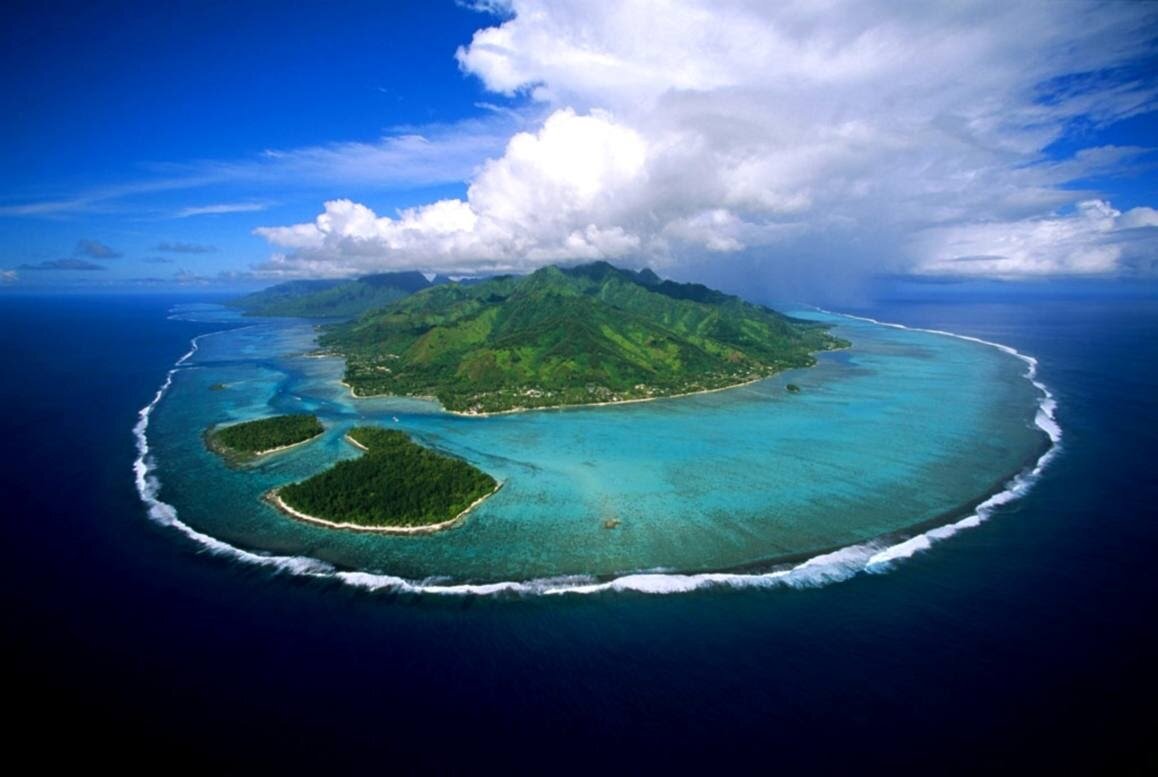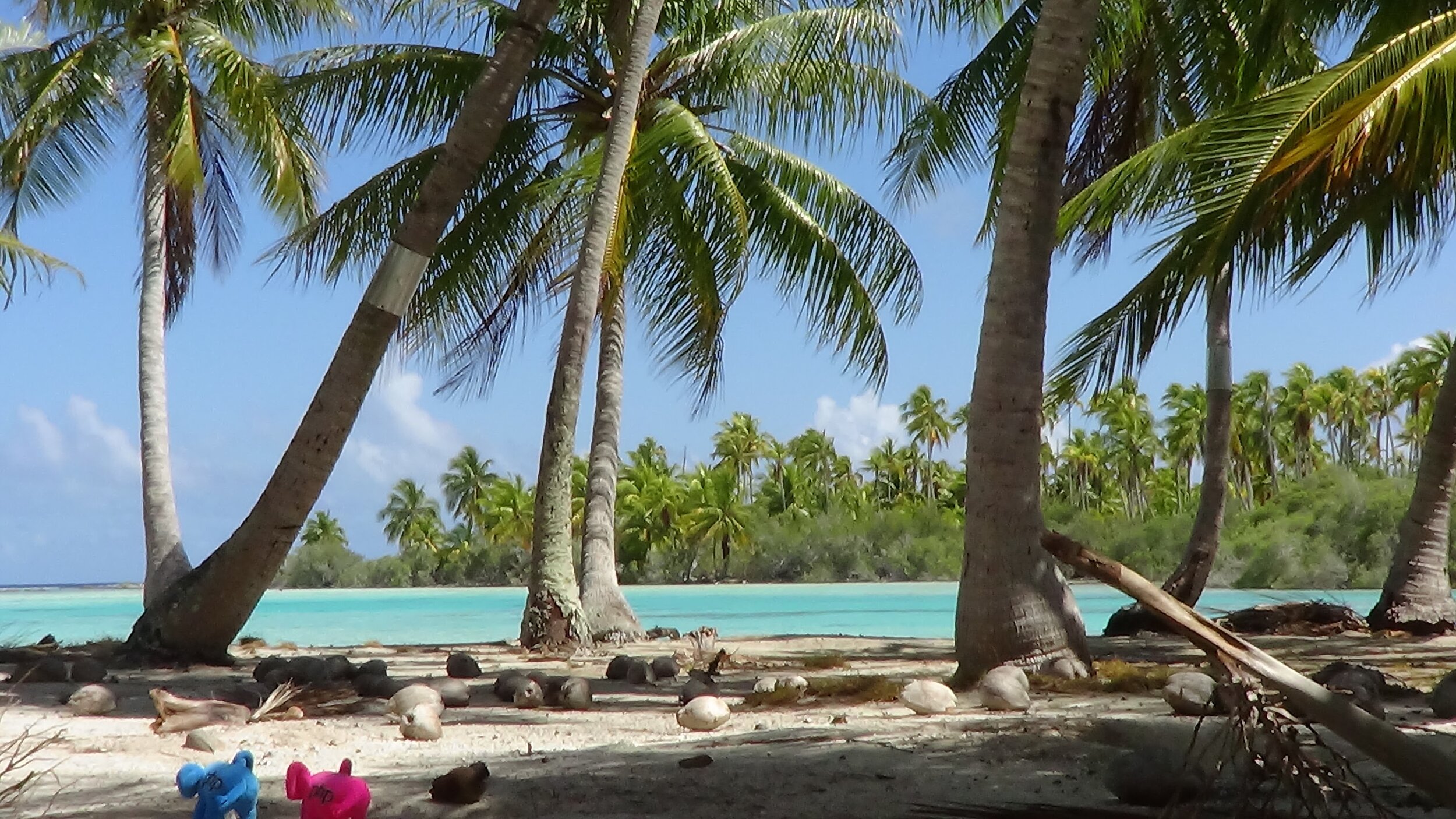Although French Polynesia conjures up images of honeymooners and overwater bungalows, the region’s less-visited islands abound in natural beauty and warm hospitality.
Stunning views in French Polynesia. Dany13. CC2.0
French Polynesia is a South Pacific collectivity under French jurisdiction made up of five island groups: the Society, Tuamotu, Marquesas, Austral and Gambier islands. The region’s history goes back as early as 500 B.C., when Polynesians traveling east from Tonga and Samoa reached the islands. Once explorers arrived in the 16th century, European fascination with the South Pacific began to grow. As a result, the islands became a French colony in 1880. French Polynesia developed quickly in the 1960s and eventually gained more political autonomy, becoming an autonomous overseas country of France in 2004.
Polynesian culture and traditions are an essential part of life on the islands. Locals appreciate their heritage and proudly showcase their vibrant culture to visitors. Examples of exemplary Polynesian craftsmanship include wood carving, weaving and tattooing, a practice deeply rooted in Polynesian mythology. Mesmerizing songs and dance embody the Polynesian spirit and allow islanders to pass down their culture and history from generation to generation.
The islands of Tahiti, Moorea and Bora Bora are the most sought-after destinations in French Polynesia due to their world-renowned resorts with overwater bungalows. However, there is much more to the islands than simply a luxury vacation. Visiting these seven French Polynesian islands will allow travelers to gain an insight into Polynesian life and the islands’ rich culture.
Polynesian dancers in Raiatea. Caproni. CC2.0
Raiatea
Known as the “sacred island,” Raiatea is the birthplace of Polynesian culture. Polynesians first gathered at the marae of Taputapuatea, as the sacred site was the political and religious center of Polynesia in ancient times. From Taputapuatea, Polynesians set off in outrigger canoes traveling west to New Zealand and north to Hawaii. Taputapuatea is a UNESCO World Heritage Site and can be visited with the accompaniment of a guide. Communities from Hawaii, New Zealand and the Cook Islands travel here as part of a pilgrimage to connect with their rich cultural heritage.
Raiatea is also the only place in the world where the tiare apetahi grows. A beautiful white flower with five petals, it has become a symbol of the island itself. Faaroa River on Raiatea is French Polynesia’s only navigable river and was said to be the starting point for outrigger canoes heading across the ocean. Raiatea is also one of the top yachting destinations in French Polynesia with a vast lagoon and excellent sailing conditions.
Vanilla pods. Hcabral. CC2.0
Tahaa
Accessible by ferry from neighboring Raiatea, Tahaa is one of the most beautiful of French Polynesia’s islands. The island has a rugged and untouched feel, dotted with lush tropical greenery and tiny villages. Known as the “vanilla island,'' Tahaa produces more than 70% of French Polynesian vanilla. Travelers can check out La Vallee de la Vanille, which is the only organic vanilla production on the island. Tahaa’s lagoons have many small islets (known as motus) which provide numerous opportunities for snorkeling in vibrant coral gardens. Tahaa also provides stunning views of neighboring Bora Bora, especially at sunset.
Views of Huahine’s lagoon. Tiarescott. CC2.0
Huahine
Huahine is one of French Polynesia’s least-visited islands, often referred to as “the secret island.” Containing Huahine Nui (Big Huahine), Huahine Iti (Little Huahine) and eight villages, Huahine provides a break from the stresses of the modern world. As the island receives few tourists, visitors can expect to be welcomed to Huahine with great hospitality. The island is known for its lush greenery and landscape dotted with fruit and vanilla plantations. Huahine abounds in cultural sites, containing the largest number of marae temples in all of Polynesia. Huahine is also home to blue-eyed eels, sacred fish ranging from 4 to 6 feet long that live in a stream near the village of Faie.
Palm trees in Fakarava. Villenueve. Public domain
Fakarava
Located in the Tuamotu archipelago, the largest group of atolls in the world, Fakarava is known throughout French Polynesia for its stunning natural beauty. Meaning “beautiful” or “making things superb” in Tahitian, Fakarava is a designated UNESCO Biosphere Reserve for its abundant marine life. There are many conservation efforts underway here, including educational outreach programs and monitoring of the island’s flora and fauna. The French artist Henri Mattise visited Fakarava in 1930 and was said to be blown away by the countless shades of blue in the lagoon, inspiring many of his later creations.
Rangiroa atoll from the air. Keats. CC2.0
Rangiroa
Also located in the Tuamotu archipelago, Rangiroa is the second-largest atoll in the world. Containing over 240 islets surrounding an enormous lagoon, there is no shortage of places to visit. The Rangiroa atoll is also one of the best places in the world for scuba diving. The waters near the villages of Tiputa and Avatoru provide excellent opportunities to see sharks, dolphins, manta rays and more. Other noteworthy sights in Rangiroa include Le Sable Roses, a pink sand beach located on the atoll’s southern rim, and Blue Lagoon, a spot that’s often referred to as a natural aquarium for its abundance of fish.
Manihi’s lagoon. Cyriljouin. CC4.0
Manihi
With less than 1,000 residents, the island of Manihi provides an opportunity for travelers to experience slow-paced island life. The first black pearl farm in French Polynesia began in Manihi in 1965, a practice that has since become widespread across the islands. Today, pearl farming remains a crucial part of Manihi’s economy and culture. Travelers can visit these farms to learn about this fascinating process while supporting local businesses.
Views of Rurutu. Burckel. CC2.0
Rurutu
Rurutu is in French Polynesia's Austral Islands about 370 miles south of Tahiti. The island has stunning mountains and fertile landscapes dotted with fruit and coffee plantations. Humpback whales are Rurutu’s main attraction and can be found from August to October. Moerai, the largest village and home to most of Rurutu’s 2,400 people, provides a great insight into the island’s unique culture. Skilled female artisans known as mamas are renowned for their exquisite handwoven goods, including hats, mats and patchwork blankets called “tifaifai.” Moerai was also home to the famous Tiki statue of Aa, although only a replica remains on the island. The original statue is in the British Museum in London.
In this time of global uncertainty, small island nations that depend heavily on tourism feel the impacts of the pandemic the hardest. By appreciating the unique customs and cultures of small island communities such as those in French Polynesia, their way of life can be preserved for generations to come.
Megan Gürer
Megan is a Turkish-American student at Wellesley College in Massachusetts studying Biological Sciences. Passionate about environmental issues and learning about other cultures, she dreams of exploring the globe. In her free time, she enjoys cooking, singing, and composing music.









